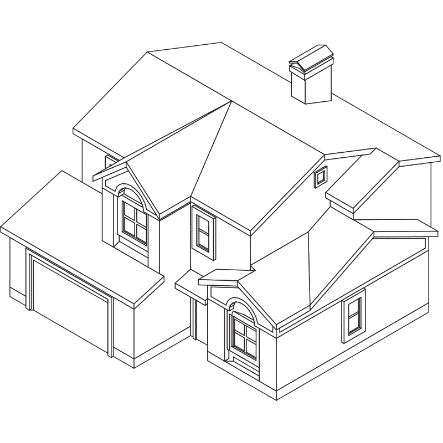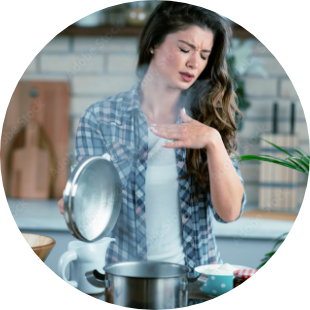
Over the past decade, houses have been built to be extremely energy efficient, with the result of tight, well insulated homes. As long as mechanical ventilation and pollutant controls are in place, this can be a highly effective and energy-efficient solution. However, many tightly constructed homes do not have adequate ventilation of fresh air, and this can lead to problems like mold, toxic buildup of gases and pathogen spread.
Many household products contribute to poor indoor air quality, including building materials, cleaning supplies, air fresheners and pesticides. These products create pollution by releasing formaldehyde and other harmful chemicals into the air. To prevent buildup, you need proper ventilation, humidity control that remains between 30% and 50% relative humidity, and filtered fresh air circulating in all occupied spaces.
What’s in the air?
Common air contaminants inside the home include:
Toxins
Furniture, paint, insecticides and cleaning supplies are just a few of the everyday products that emit formaldehyde and other volatile organic compounds (VOCs). In air fresheners, less than 10% of ingredients are disclosed to consumers.2
Combustion products
Fuel-burning appliances yield harmful particles and gases, such as carbon monoxide (CO) and nitrogen dioxide (NO2), that are harmful in high concentrations. Gas stoves, used in about 35% of U.S. homes, are associated with an increased risk of childhood asthma.
Allergens
Dust, pollen, secondhand smoke, animal dander, mold and saliva are all household air pollutants that may trigger asthma attacks or worsen allergy symptoms.

When there is a lack of fresh air entering our homes, we breathe in higher amounts of contaminants from cooking and other sources. That’s a huge concern as exposure to indoor air pollutants increases our risk of asthma, lung cancer, heart disease and other health problems.3 A stuffy home environment can impact our health in more subtle ways as well, causing uncomfortable symptoms such as throat irritation, chest tightness, itchy skin and difficulty concentrating.4
Consider the following:
-

Globally, household air pollution contributes to an estimated 3.2 million deaths each year.5
-

Heightened daily exposure to fine particulate matter is linked to more hospital admissions and deaths related to respiratory and cardiovascular conditions.6
-

About 80% of our exposure to pesticides occurs indoors, with measurable levels of up to a dozen pesticides detected in household air.7
-

Studies by the EPA have found concentrations of several common VOCs to be 2x to 5x higher inside residences than outside — regardless of whether the homes were in rural or more industrial regions.8
There is growing evidence to show that poor household air quality is impacting our health for the worse. For our own wellness, and for the sake of our families and loved ones, it’s important to have a ventilation system that supplies enough fresh air to dilute unseen hazards in the air.
How to Improve Ventilation at Home
For proper ventilation and filtration of indoor air pollutants, take care to maintain an adequate HVAC system. To assess your system needs and upgrade requirements, you should hire an HVAC professional who is highly skilled and trained to conduct a Ventilation Verification.
Remember that cooking in a well-ventilated space should be part of your overall household indoor air quality plan, and a robust HVAC system is especially critical and worth discussing with an HVAC professional.
Find an HVAC Professional
It takes a highly trained HVAC professional to conduct a Ventilation Verification, test and balance an HVAC system, or repair and replace it. If you care about the air you and your tenants breathe, your search for cleaner air starts here.
